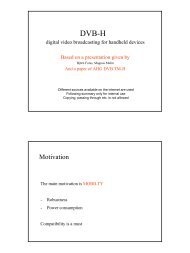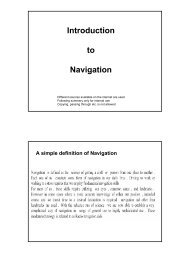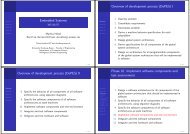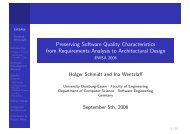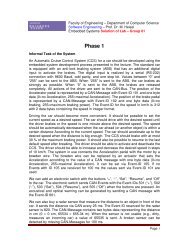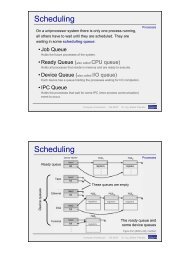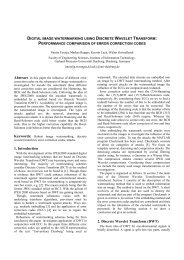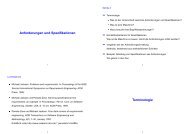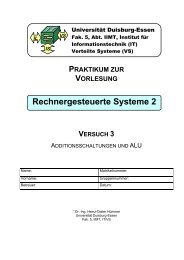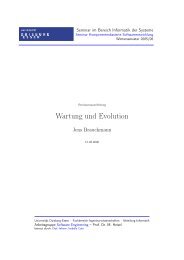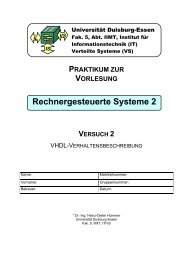Slides Part 2 (OOA, pages 1-128, pdf, 4 slides per page)
Slides Part 2 (OOA, pages 1-128, pdf, 4 slides per page)
Slides Part 2 (OOA, pages 1-128, pdf, 4 slides per page)
You also want an ePaper? Increase the reach of your titles
YUMPU automatically turns print PDFs into web optimized ePapers that Google loves.
OBJECT-ORIENTED ANALYSIS<br />
➠ Class model =⇒ Static aspects<br />
➠ Interface model =⇒ Dynamic aspects<br />
AIM<br />
• Use case model<br />
• Scenarios<br />
• O<strong>per</strong>ation model<br />
• System class model<br />
• Life-Cycle model<br />
➠ Descriptive specification of exactly the identified system o<strong>per</strong>ations<br />
➠ Specification of the state changes and generated output events<br />
➠ No programming, no behavior inside the system.<br />
➠ An o<strong>per</strong>ation schema must be specified for each system o<strong>per</strong>ation.<br />
➠ O<strong>per</strong>ation model = set of o<strong>per</strong>ation schemas<br />
65<br />
67<br />
The o<strong>per</strong>ation model<br />
EACH OPERATION SCHEMA CONTAINS<br />
➠ Name of the system o<strong>per</strong>ation<br />
➠ Informal description<br />
➠ Input/Output, communication with environment<br />
66<br />
➠ Assumptions on the state of the system before execution of the o<strong>per</strong>ation.<br />
➠ State change (effect) achieved by the o<strong>per</strong>ation.<br />
68



